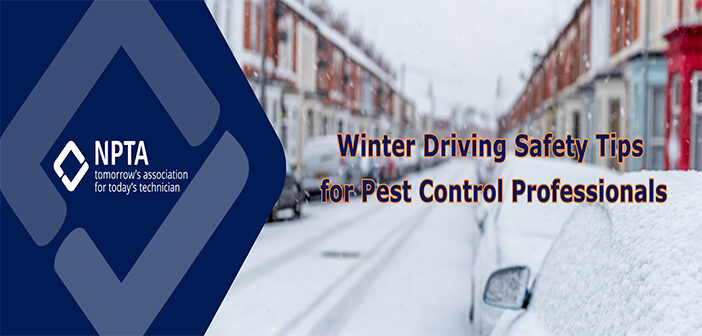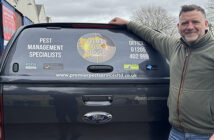As we head into the colder months, driving conditions can become hazardous, with wet, icy, and snowy roads posing extra challenges.
NPTA chief executive Kevin Lawrenson said: “For pest control professionals who rely on their vehicles every day, preparing for winter driving is not only about efficiency – it’s about safety. Here are some essential winter driving tips to help keep you safe on the road this season.”
Prepare your vehicle for winter
Check your tyres: Ensure tyres have adequate tread depth and are properly inflated. Winter tyres are a great option if you’re frequently driving in snowy or icy conditions, as they provide better grip.
Battery and engine check: Cold weather puts extra strain on vehicle batteries. Have your battery tested and replace it if it’s showing signs of weakness. Keep your engine fluids topped up, including antifreeze and windshield washer fluid.
Emergency kit: Stock your vehicle with winter essentials: an ice scraper, shovel, blankets, a flashlight, first aid kit, water, and non-perishable snacks (in rodent-proof container!). A set of jump cables and extra warm clothing can also be helpful if you’re caught in a breakdown.
Plan your route and check the weather
Weather alerts: Check the forecast before heading out. If severe weather is expected, it may be worth postponing non-urgent appointments or adjusting your schedule to avoid hazardous conditions.
Alternate routes: Plan safe routes and avoid roads that are known to be less maintained in winter. Stick to main roads whenever possible, as they are more likely to be cleared of snow and ice.
Drive with extra caution
Slow down: Speed limits are based on optimal conditions. When driving in winter weather, reduce your speed and increase your following distance to allow for extra stopping time.
Avoid sudden movements: Sudden braking, accelerating, or turning can lead to skidding. Ease into manoeuvres and apply the brakes gently to maintain control.
Stay focused: Winter driving requires your full attention. Avoid distractions, keep both hands on the wheel, and be mindful of potential hazards, such as black ice and snow drifts.
Floods: Slow down to a low speed through floods as you can easily lose grip; don’t drive through anything other than shallow floods to avoid engine damage and/or the car floating off course; avoid flooded roads altogether where possible.
Know how to handle skids
Stay calm and steer: If you begin to skid, avoid slamming on the brakes. Instead, steer gently in the direction you want the front of the vehicle to go and take your foot off the accelerator.
Braking on ice: If your vehicle has anti-lock brakes, apply steady pressure to the brake pedal. For non-ABS vehicles, pump the brakes gently.
Take regular breaks and stay energised
Long trips: If you’re driving a longer route, take regular breaks to rest, stretch, and stay alert. Cold weather can be draining, and fatigue can affect reaction times, so it’s important to stay refreshed.
Communicate your whereabouts
Notify your team: Let someone know your route and estimated time of arrival, especially if you’re travelling to remote locations. This way, help can reach you quickly if needed.
Emergency contacts: Make sure you have access to emergency numbers in case of a breakdown, and always carry a fully charged mobile phone.
Stay safe this winter
Mr Lawrenson added: “Driving is a key part of a pest control professional’s day, and winter conditions require extra care and preparation.
“By taking these steps, you’ll be ready for the season and better equipped to handle whatever the winter weather brings. Stay safe out there!”




